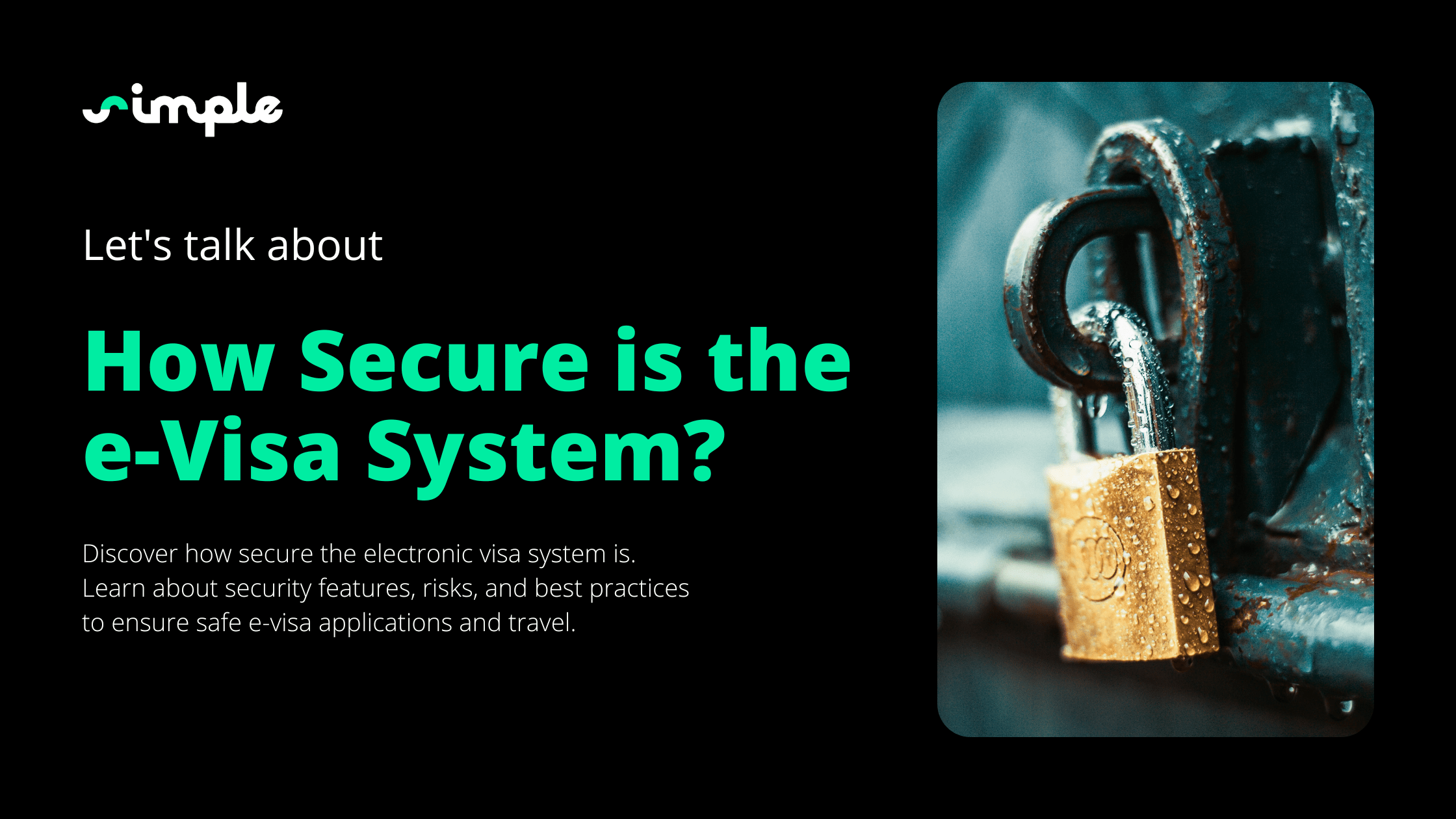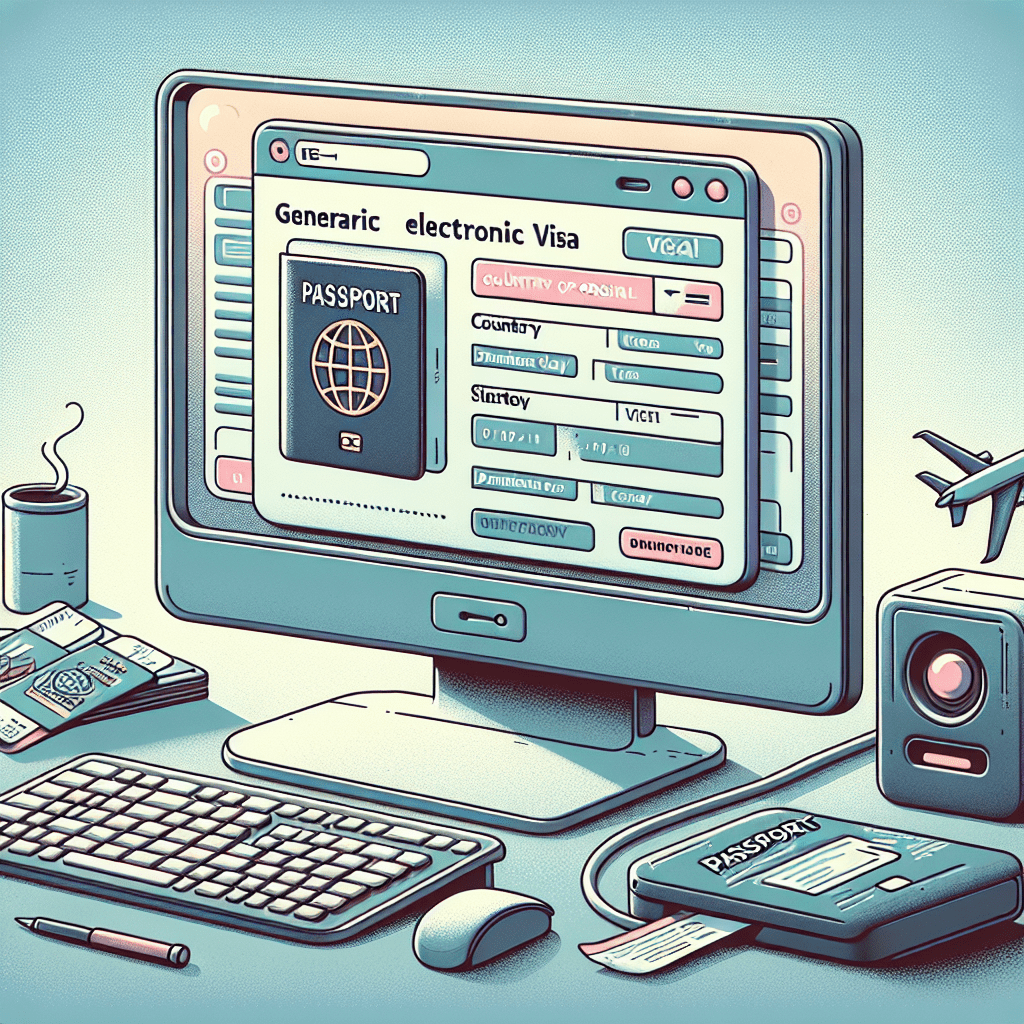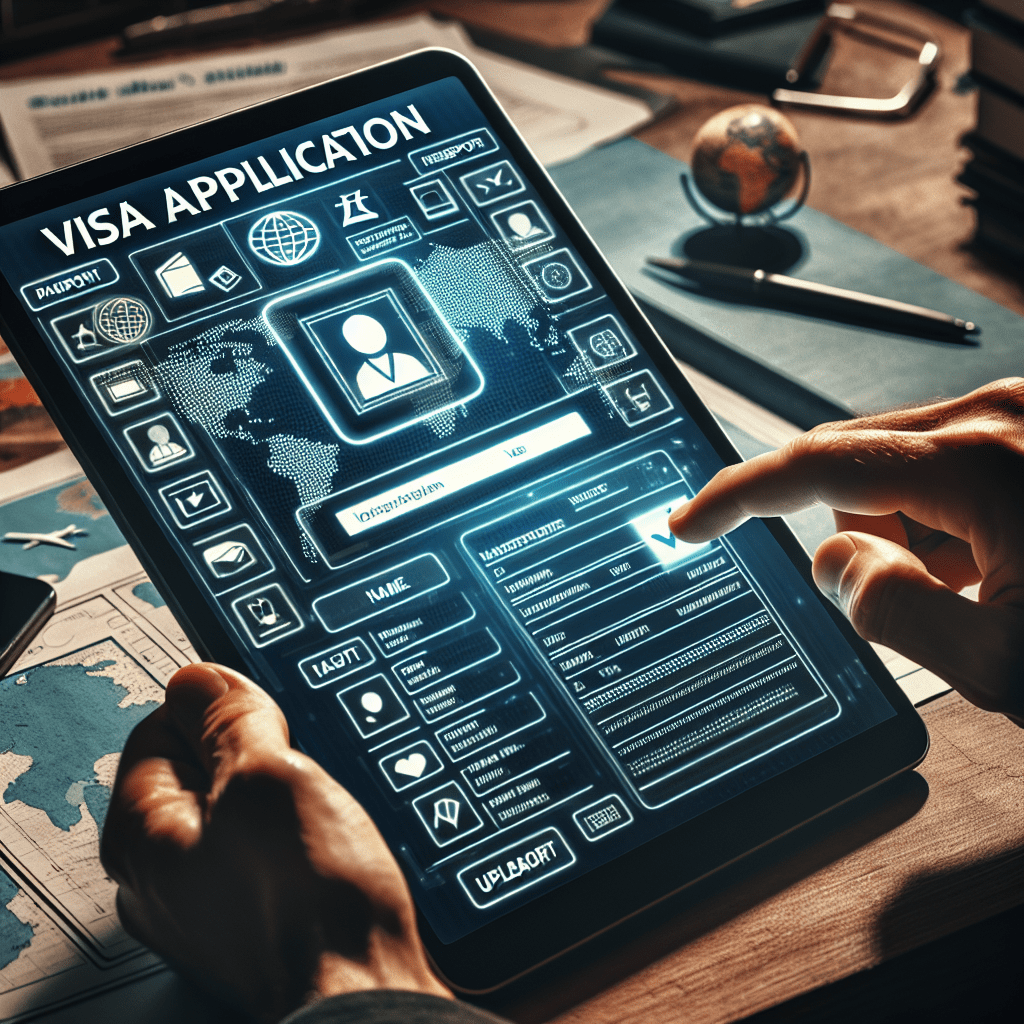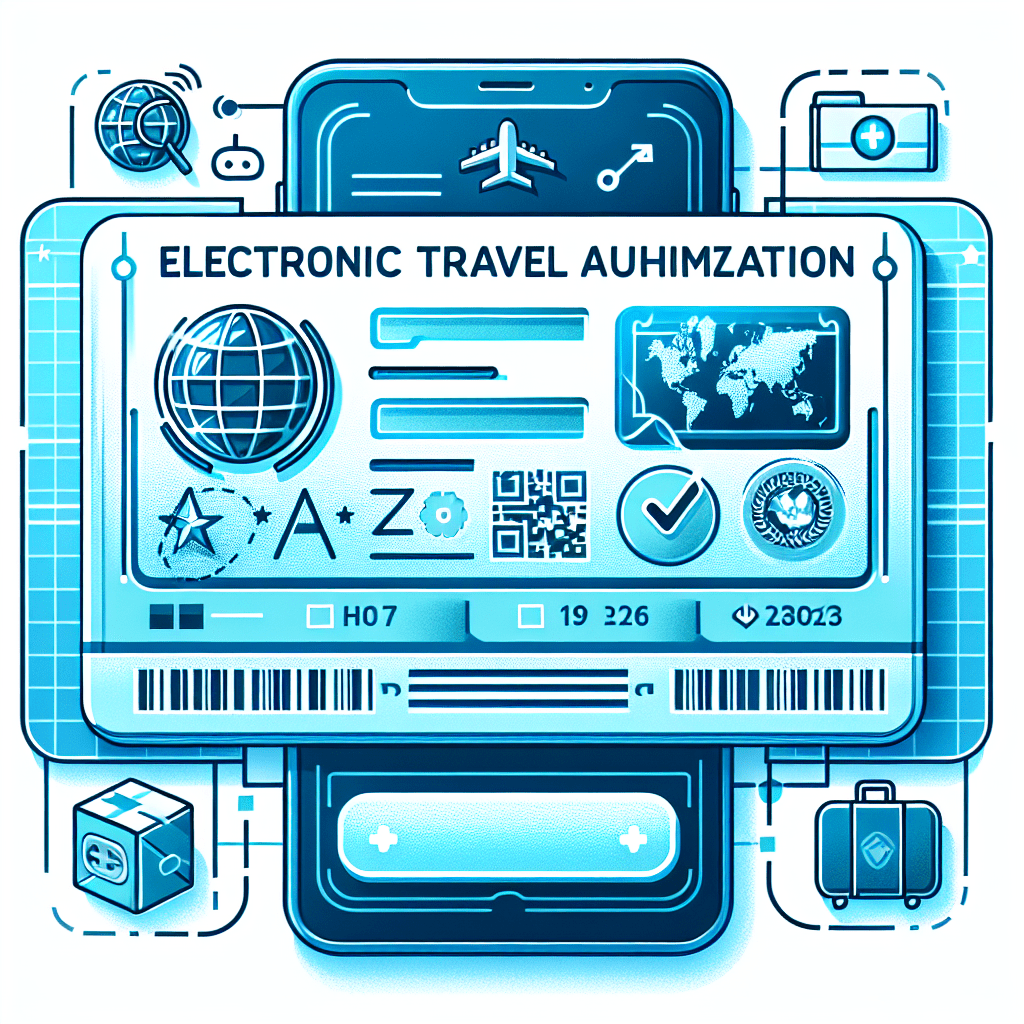**How Secure is the Electronic Visa System?**

The e-Visa system has revolutionized the way travelers apply for and obtain visas, offering a convenient and efficient alternative to traditional paper-based methods. As the popularity of electronic visas continues to grow, so does the need to ensure that these digital processes are secure. With millions of travelers relying on e-Visas for their international journeys, the importance of robust security measures cannot be overstated. Security in the e-Visa system is paramount, as it involves the handling of sensitive personal information and critical travel documents. Ensuring that this data is protected from unauthorized access and cyber threats is essential for maintaining the integrity and trustworthiness of the system. Various technological safeguards, regulatory measures, and user best practices are in place to enhance the security of electronic visa applications. Examining the security measures implemented in the e-Visa system provides valuable insights into how these digital platforms protect user data and maintain the safety of international travel. By understanding the layers of security involved, travelers can feel more confident in using electronic visas for their travel needs.

Technological Safeguards
Encryption Protocols
Encryption protocols are the backbone of any secure digital visa application system. These protocols ensure that sensitive data, such as personal information and travel documents, are encrypted during transmission and storage. Data encryption standards like AES (Advanced Encryption Standard) are widely used to protect information from unauthorized access. AES, with its 256-bit encryption, is considered highly secure and is commonly employed in various online visa processing systems. The role of SSL/TLS (Secure Sockets Layer/Transport Layer Security) in securing transactions cannot be overstated. SSL/TLS protocols establish an encrypted link between the user’s browser and the server, ensuring that all data passed between them remains private and integral. This is particularly crucial for online immigration visa applications, where personal and financial information is exchanged. By using SSL/TLS, e-Visa platforms can provide a secure environment for applicants, significantly reducing the risk of data breaches and cyber-attacks.
Biometric Verification
Biometric verification is another critical component of e-Visa security measures. This technology uses unique biological characteristics, such as fingerprints, facial recognition, and iris scans, to verify the identity of applicants. The types of biometric data used in electronic travel authorization systems vary, but they all serve the same purpose: to ensure that the person applying for the visa is indeed who they claim to be. Biometrics enhance security by adding an additional layer of verification that is difficult to forge or replicate. Unlike traditional identification methods, such as passwords or PINs, biometric data is unique to each individual and cannot be easily compromised. This makes it an effective tool for preventing identity theft and ensuring the integrity of the digital immigration document. By incorporating biometric verification, e-Visa platforms can offer a more secure and reliable service to their users.
Multi-Factor Authentication
Multi-factor authentication (MFA) is a security measure that requires users to provide two or more forms of identification before accessing their accounts. Common methods of multi-factor authentication include something the user knows (like a password), something the user has (like a mobile device), and something the user is (like biometric data). This layered approach significantly enhances the security of the e-Visa application process. The benefits of multi-layered security are manifold. First, it makes it much more difficult for unauthorized users to gain access to sensitive information. Even if one form of identification is compromised, the additional layers provide a robust defense against unauthorized access. Second, MFA can help detect and prevent fraudulent activities by requiring multiple forms of verification. This is particularly important for internet-based visa systems, where the risk of cyber-attacks is ever-present. By implementing encryption protocols, biometric verification, and multi-factor authentication, e-Visa platforms can offer a secure visa application process that protects user data and ensures the integrity of the system. These technological safeguards are essential for maintaining the trust and confidence of travelers who rely on electronic visas for their international journeys.

Regulatory and Compliance Measures
International Standards
Compliance with international standards is a cornerstone of a secure visa application process. One of the primary organizations setting these standards is the International Civil Aviation Organization (ICAO). The ICAO provides guidelines for the secure handling and processing of travel documents, including electronic travel authorizations and digital travel permits. These guidelines ensure that e-Visa systems worldwide adhere to a consistent set of security protocols, making international travel safer and more reliable. Adherence to data protection laws, such as the General Data Protection Regulation (GDPR) in Europe, is also crucial. GDPR sets stringent requirements for the collection, storage, and processing of personal data, ensuring that individuals’ privacy is protected. For an internet-based visa system, compliance with GDPR and similar regulations in other regions is essential for maintaining the trust of applicants. These laws mandate that e-Visa platforms implement robust data protection measures, conduct regular security assessments, and provide transparency about how personal data is used. By following international standards and data protection laws, e-Visa platforms can offer a secure and trustworthy service. This not only enhances online visa security but also ensures that the digital immigration document is recognized and accepted globally.
Government Oversight
National governments play a pivotal role in the security of e-Visa systems. Government oversight ensures that electronic visa platforms comply with national security standards and regulations. This oversight includes the implementation of secure visa application processes, regular security audits, and the enforcement of stringent data protection measures. Examples of government-led security initiatives include the U.S. Electronic System for Travel Authorization (ESTA) and the European Union’s ETIAS (European Travel Information and Authorization System). These systems are designed to pre-screen travelers before they enter the country, enhancing border security and reducing the risk of illegal immigration. By leveraging advanced technologies and stringent security protocols, these government-led initiatives set a high standard for online immigration visa systems. Government oversight also involves collaboration with international organizations and other countries to share best practices and improve the overall security of e-Visa systems. This collaborative approach ensures that electronic entry permits and other digital travel documents are secure and reliable, providing peace of mind for travelers and authorities alike.
Regular Audits and Updates
Regular security audits are essential for maintaining the integrity of e-Visa systems. These audits involve a thorough examination of the platform’s security measures, identifying potential vulnerabilities and areas for improvement. By conducting periodic security audits, e-Visa platforms can proactively address any issues and ensure that their systems remain secure. Continuous improvement through software updates is another critical aspect of maintaining online visa security. As cyber threats evolve, so too must the security measures in place to protect against them. Regular software updates ensure that e-Visa platforms are equipped with the latest security features and technologies. This includes updates to encryption protocols, biometric verification systems, and multi-factor authentication methods. By prioritizing regular audits and continuous improvement, e-Visa platforms can stay ahead of emerging threats and provide a secure and reliable service. This commitment to security not only protects the personal data of applicants but also enhances the overall trustworthiness of the electronic visa platform. In summary, regulatory and compliance measures play a vital role in the security of e-Visa systems. By adhering to international standards, ensuring government oversight, and conducting regular audits and updates, e-Visa platforms can offer a secure and trustworthy service for travelers worldwide.

User Responsibility and Best Practices
Secure Application Process
Ensuring a secure application process is a shared responsibility between the e-Visa platform and the applicants. For a secure visa application, users must take several precautions to protect their personal information. One of the most effective tips for applicants is to use a secure and private internet connection when submitting their digital visa application. Public Wi-Fi networks are often less secure and can be susceptible to cyber-attacks, making it crucial to use a trusted network. Recognizing and avoiding phishing scams is another essential aspect of a secure application process. Phishing scams often involve fraudulent emails or websites that mimic legitimate e-Visa platforms to steal personal information. Applicants should always verify the authenticity of the website before entering any sensitive information. This can be done by checking the URL for HTTPS and looking for security certificates. Additionally, users should be cautious of unsolicited emails requesting personal information and report any suspicious activities to the relevant authorities. By following these best practices, applicants can significantly reduce the risk of their personal information being compromised during the e-Visa application process. This not only enhances online visa security but also ensures a smoother and safer experience for travelers.
Safe Storage of e-Visa Information
Once the e-Visa is granted, it is crucial to store the digital travel permit securely. Recommendations for storing digital documents include using encrypted storage solutions and secure cloud services. These methods provide an additional layer of protection against unauthorized access. Applicants should also consider using strong, unique passwords for their storage accounts and enabling multi-factor authentication to further enhance security. The importance of not sharing sensitive information cannot be overstated. Sharing e-Visa details, such as the electronic entry permit number or personal identification information, can lead to identity theft and other security risks. Applicants should keep their e-Visa information confidential and only share it with trusted parties when absolutely necessary. By adopting these safe storage practices, users can protect their digital immigration documents and ensure that their personal information remains secure. This is particularly important for those using web-based visa services, where the risk of cyber threats is higher.
Reporting Suspicious Activities
Reporting suspicious activities is a critical component of maintaining the integrity of the e-Visa system. Users should be vigilant and report any potential security breaches or fraudulent activities to the relevant authorities immediately. This includes suspicious emails, unauthorized access attempts, and any discrepancies in the e-Visa application process. The role of users in maintaining system integrity extends beyond just reporting suspicious activities. By staying informed about the latest security threats and best practices, users can contribute to the overall security of the electronic visa platform. This collaborative approach ensures that both the platform and its users are working together to create a secure and trustworthy environment. In summary, user responsibility and best practices are essential for the security of the e-Visa system. By ensuring a secure application process, safely storing e-Visa information, and reporting suspicious activities, users can significantly enhance the security of their online visa processing experience. This not only protects their personal information but also contributes to the overall integrity and trustworthiness of the e-Visa platform.

Conclusion
The security measures in place for e-Visas are comprehensive and multi-faceted, designed to protect sensitive personal information and ensure the integrity of the digital visa application process. Technological safeguards such as encryption protocols, biometric verification, and multi-factor authentication form the first line of defense against cyber threats. These measures ensure that data is encrypted during transmission and storage, identities are verified through unique biological characteristics, and multiple forms of identification are required for access. Regulatory and compliance measures further bolster the security of e-Visa systems. Adherence to international standards set by organizations like the ICAO and compliance with data protection laws such as GDPR ensure that e-Visa platforms operate within a framework of stringent security protocols. Government oversight and regular audits also play a crucial role in maintaining the security and reliability of electronic visa platforms. These measures ensure that the systems are continuously updated and improved to counter emerging threats. User responsibility and best practices are equally important in maintaining the security of the e-Visa system. Applicants must take precautions to ensure a secure application process, safely store their digital travel permits, and report any suspicious activities. By following these best practices, users can significantly enhance the security of their online visa processing experience and contribute to the overall integrity of the system. Balancing convenience and security in the e-Visa system is a delicate but achievable goal. The convenience of digital visa applications, online visa processing, and electronic travel authorizations has made international travel more accessible and efficient. However, this convenience must not come at the expense of security. The robust security measures in place ensure that the e-Visa system remains a reliable and trustworthy option for travelers. The integration of advanced technologies, stringent regulatory measures, and user best practices creates a secure environment for electronic visa platforms. This balance between convenience and security allows travelers to enjoy the benefits of a streamlined visa application process without compromising their personal information. As the e-Visa system continues to evolve, maintaining this balance will be crucial for its ongoing success and acceptance worldwide. In conclusion, the e-Visa system offers a secure and convenient solution for international travelers. By implementing comprehensive security measures and encouraging user responsibility, the system ensures that travelers can confidently use digital visa applications for their travel needs. This balance between convenience and security is essential for the continued growth and success of the e-Visa system.